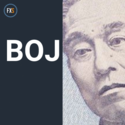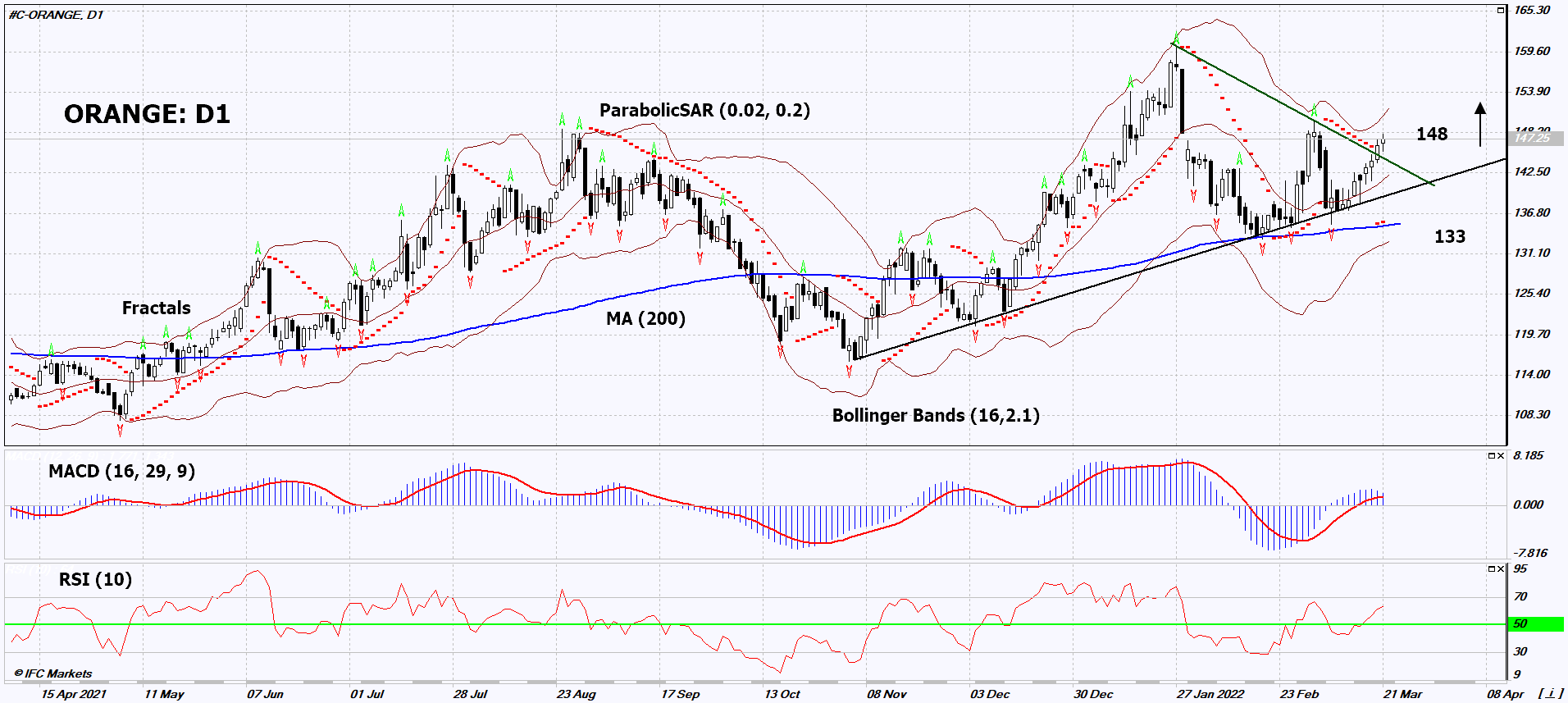Orange Juice technical analysis summary
Buy Stop։ Above 148.
Stop Loss: Below 133.
| Indicator | Signal |
| RSI | Neutral |
| MACD | Buy |
| MA(200) | Neutral |
| Fractals | Neutral |
| Parabolic SAR | Buy |
| Bollinger Bands | Neutral |
Orange Juice chart analysis
On the daily timeframe, ORANGE: D1 went up from the triangle. Some technical analysis indicators have formed signals for further growth. We do not rule out a bullish movement if ORANGE breaks above the last high of 148. This level can be used as an entry point. The initial risk limit is possible below the Parabolic signal, the last three lower fractals and the 200-day moving average line: 133. After opening a pending order, we move the stop after the Bollinger and Parabolic signals to the next fractal low. Thus, we are changing the potential profit/loss ratio in our favor. The most cautious traders after making a trade can go to the four-hour chart and set a stop-loss, moving it in the direction of movement. If the price overcomes the stop level (133) without activating the order (148), it is recommended to delete the order: the market is experiencing internal changes that were not taken into account.
Fundamental analysis of commodities – Orange Juice
The US Department of Agriculture (USDA) once again lowered its forecast for the US orange crop. Will the ORANGE quotes continue to increase?
In March, the USDA estimated the US orange crop for the 2021/2022 crop season at 3.78 million tons. This is 15% less than in the previous 2020/2021 season and 3% less than the forecast published in February this year. Another positive factor for quotes may be the data of the Brazilian Association of Citrus Exporters that the export of orange juice from Brazil from the beginning of the current season in July 2021 to February 2022 decreased by 1% compared to the same period of the previous season and amounted to 658, 4 thousand tons. Note that the Citriculture Defense Fund (Fundecitrus) predicts a 10.2% reduction in Brazil's orange crop due to bad weather. According to Fundecitrus, the export of orange juice to China for 8 months of the current season increased by 60% to 51.7 thousand tons. However, while its share in Brazilian exports still does not exceed 10%. At the same time, about 64% of juice is supplied to Europe and 20% - to the USA. China ranks 3rd.
Want to get more free analytics? Open Demo Account now to get daily news and analytical materials.
This overview has an informative character and is not financial advice or a recommendation. IFCMarkets. Corp. under any circumstances is not liable for any action taken by someone else after reading this article.
Recommended content
Editors’ Picks
USD/JPY holds near 155.50 after Tokyo CPI inflation eases more than expected

USD/JPY is trading tightly just below the 156.00 handle, hugging multi-year highs as the Yen continues to deflate. The pair is trading into 30-plus year highs, and bullish momentum is targeting all-time record bids beyond 160.00, a price level the pair hasn’t reached since 1990.
AUD/USD stands firm above 0.6500 with markets bracing for Aussie PPI, US inflation

The Aussie Dollar begins Friday’s Asian session on the right foot against the Greenback after posting gains of 0.33% on Thursday. The AUD/USD advance was sponsored by a United States report showing the economy is growing below estimates while inflation picked up.
Gold soars as US economic woes and inflation fears grip investors

Gold prices advanced modestly during Thursday’s North American session, gaining more than 0.5% following the release of crucial economic data from the United States. GDP figures for the first quarter of 2024 missed estimates, increasing speculation that the US Fed could lower borrowing costs.
Stripe looks to bring back crypto payments as stablecoin market cap hits all-time high

Stripe announced on Thursday that it would add support for USDC stablecoin, as the stablecoin market exploded in March, according to reports by Cryptocompare.
Bank of Japan expected to keep interest rates on hold after landmark hike

The Bank of Japan is set to leave its short-term rate target unchanged in the range between 0% and 0.1% on Friday, following the conclusion of its two-day monetary policy review meeting for April. The BoJ will announce its decision on Friday at around 3:00 GMT.
